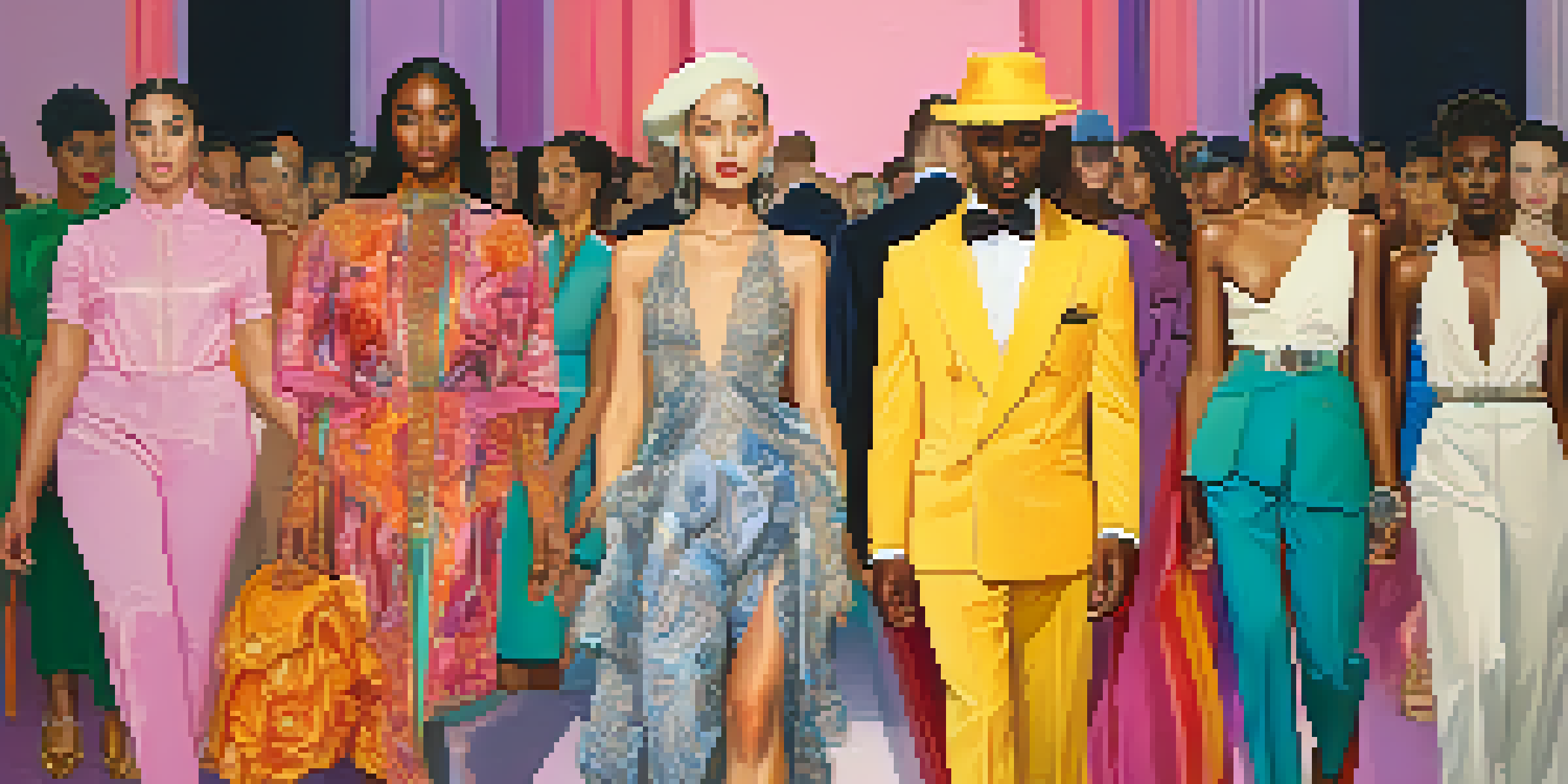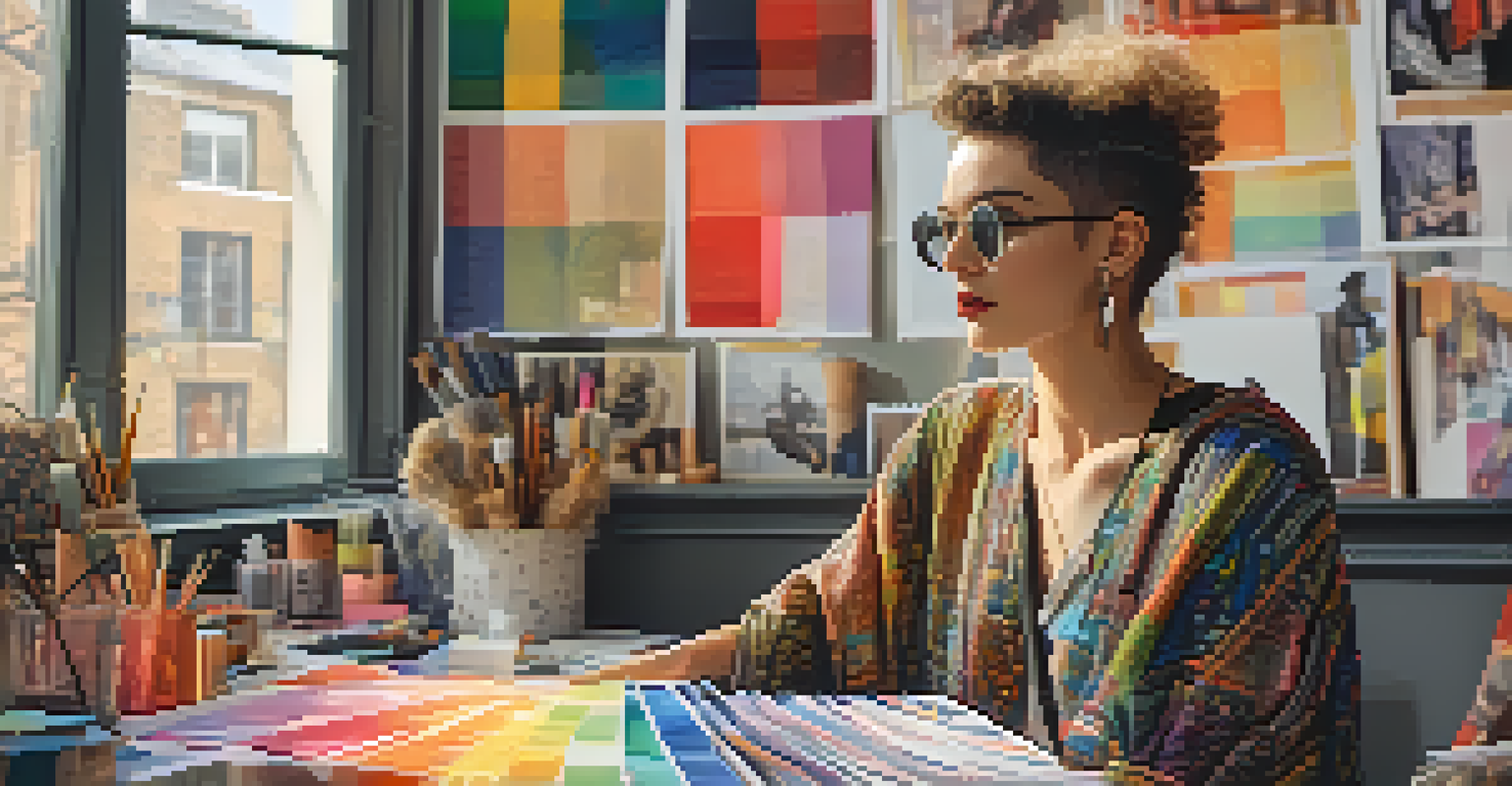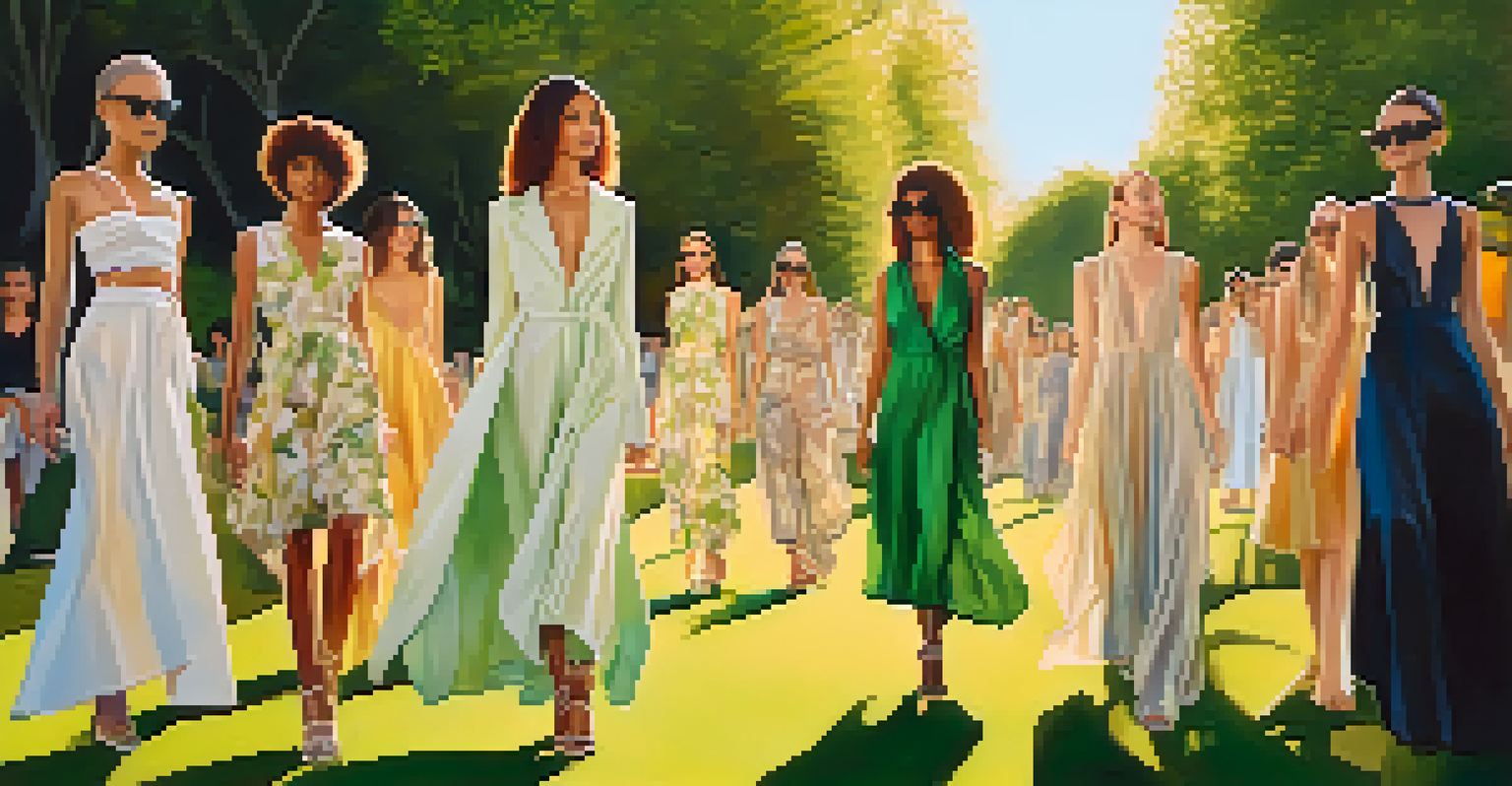Queer Representation in Fashion: Breaking Traditional Norms

The Evolution of Queer Representation in Fashion
Fashion has always mirrored cultural shifts, and queer representation is no exception. Over the decades, LGBTQ+ individuals have influenced fashion trends, from the flamboyant styles of the 1970s to today's more inclusive designs. This evolution reflects a growing acceptance within society, where individuality is celebrated rather than suppressed.
Fashion is a language that creates itself in clothes to interpret reality.
In the past, the fashion industry often sidelined queer voices, sticking to traditional norms that marginalized non-conformity. However, as queer individuals began to assert their identities, designers took notice. This shift has led to a more diverse representation on runways and in campaigns, showcasing the beauty of breaking away from established norms.
Today, we see a broader range of expressions in fashion, with many brands actively seeking to represent queer identities. This not only empowers individuals within the community but also educates the wider public about the importance of inclusivity. As we embrace diverse styles, we also foster a culture of acceptance and creativity.
Iconic Queer Figures Influencing Fashion Trends
Throughout history, numerous queer figures have left an indelible mark on fashion. From the legendary designer Alexander McQueen to modern icons like Billy Porter, these individuals have pushed boundaries with their daring styles. Their influence extends beyond clothing, challenging societal standards and inspiring others to express their identities boldly.

These icons often use fashion as a form of self-expression, showcasing how clothing can reflect one's inner self. For instance, Porter has famously worn dresses on red carpets, defying traditional gender norms and making a powerful statement about fluidity in fashion. Such acts of bravery resonate deeply within the LGBTQ+ community and beyond.
Queer Influence in Fashion Grows
The evolution of queer representation in fashion showcases a shift towards inclusivity and individuality, reflecting broader societal acceptance.
Moreover, the visibility of these figures in mainstream fashion helps to normalize queer representation. As they gain recognition, it encourages aspiring designers and models from the queer community to pursue their passions, knowing they too can make a difference in the industry. This cycle of representation ultimately enriches the world of fashion.
The Role of Fashion Weeks in Promoting Diversity
Fashion weeks around the globe have become platforms for diverse representation, showcasing queer talent and perspectives. Events like New York and London Fashion Weeks now prioritize inclusivity, featuring designers and models from various sexual orientations and gender identities. This shift not only broadens the spectrum of beauty but also signals a change in industry standards.
Style is a way to say who you are without having to speak.
By amplifying queer voices, fashion weeks play a crucial role in challenging traditional norms. They provide a space for innovative designs that celebrate individuality, encouraging designers to experiment with styles that reflect their personal experiences. As a result, audiences are exposed to a richer tapestry of fashion that celebrates diversity.
Furthermore, the presence of queer representation at these events inspires attendees and viewers to appreciate the importance of authenticity. When fashion reflects the true essence of its creators, it fosters a deeper connection with the audience. This evolution is paving the way for a more inclusive future in the fashion industry.
The Impact of Social Media on Queer Fashion
Social media has revolutionized how fashion is consumed and created, providing a platform for queer voices to flourish. Platforms like Instagram and TikTok allow individuals to showcase their unique styles, bypassing traditional gatekeepers in the industry. This democratization of fashion encourages creativity and self-expression among queer individuals, who can now share their narratives with the world.
Additionally, social media fosters community and connection, allowing users to engage with like-minded individuals. This sense of belonging is especially vital for those who may feel marginalized in their offline lives. By sharing their fashion journeys, users not only inspire one another but also challenge conventional beauty standards.
Fashion Weeks Embrace Diversity
Global fashion weeks are now platforms for showcasing queer talent, promoting a richer and more authentic representation of beauty.
Moreover, brands are increasingly recognizing the power of social media influencers from the queer community. Collaborations with these influencers have proven successful in reaching wider audiences while promoting authentic representation. This shift signifies a growing understanding that embracing diversity in marketing is not just ethical, but also beneficial for business.
Sustainable Fashion and Queer Representation
As the fashion industry grapples with sustainability, queer representation is emerging as a vital component of this conversation. Many queer designers prioritize eco-friendly practices, merging their identities with a commitment to the environment. This intersection of values demonstrates how fashion can be both inclusive and sustainable, paving the way for a more ethical industry.
Queer designers often draw inspiration from their experiences, creating collections that reflect their values while challenging traditional norms. For example, brands like Telfar and Collina Strada emphasize not only inclusivity but also eco-consciousness, showcasing that fashion can be a vehicle for social change. Their commitment inspires others to rethink their approach to design and consumption.
This movement towards sustainability in queer fashion also encourages consumers to engage thoughtfully with the brands they support. As individuals increasingly seek out ethical options, they contribute to a culture that values both representation and responsibility. This holistic approach is essential for fostering a fashion industry that honors diversity while protecting our planet.
Challenges Still Facing Queer Representation
Despite significant progress, challenges persist in achieving true queer representation in fashion. Many mainstream brands still struggle with tokenism, where queer individuals are featured only for marketing purposes rather than genuine inclusion. This superficial representation can undermine the authenticity and significance of diverse voices in the industry.
Additionally, the intersectionality of identities within the LGBTQ+ community often goes unrecognized. For example, queer individuals of color or those with disabilities may face compounded barriers that are not addressed by broader discussions on representation. This highlights the need for a more nuanced approach to inclusivity that acknowledges all aspects of identity.
Social Media Fuels Queer Creativity
Social media has democratized fashion, allowing queer voices to thrive and challenge conventional beauty standards through self-expression.
To truly embrace diversity, the fashion industry must commit to long-term change rather than fleeting trends. This requires ongoing dialogue and collaboration with queer communities to ensure their voices are heard and valued. Only then can fashion evolve into a space that genuinely celebrates and uplifts all identities.
The Future of Queer Representation in Fashion
Looking ahead, the future of queer representation in fashion appears promising, but it demands continuous effort. As societal norms evolve, the fashion industry must keep pace, ensuring that diverse voices are not just included but celebrated. This requires a commitment to fostering new talent and supporting queer designers who are reimagining the landscape of fashion.
Furthermore, as consumers become more aware of the importance of representation, brands will be pressured to prioritize inclusivity in their marketing and design processes. This shift can lead to more authentic storytelling that resonates with a broader audience. The expectation for brands to reflect the diversity of their consumer base is growing stronger each day.

Ultimately, the future of fashion hinges on its ability to embrace authenticity and innovation. By championing queer representation, the industry can create a more vibrant and inclusive environment for all. As we move forward, let's celebrate the unique contributions of queer individuals and continue to challenge traditional norms together.